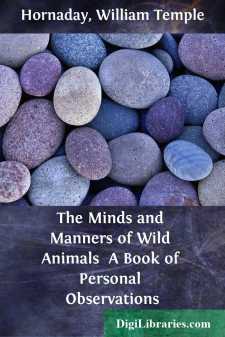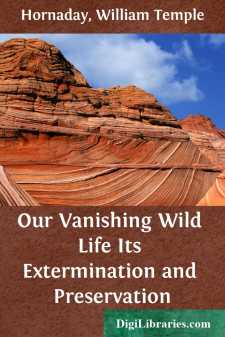Categories
- Antiques & Collectibles 13
- Architecture 36
- Art 48
- Bibles 22
- Biography & Autobiography 813
- Body, Mind & Spirit 142
- Business & Economics 28
- Children's Books 17
- Children's Fiction 14
- Computers 4
- Cooking 94
- Crafts & Hobbies 4
- Drama 346
- Education 46
- Family & Relationships 57
- Fiction 11829
- Games 19
- Gardening 17
- Health & Fitness 34
- History 1377
- House & Home 1
- Humor 147
- Juvenile Fiction 1873
- Juvenile Nonfiction 202
- Language Arts & Disciplines 88
- Law 16
- Literary Collections 686
- Literary Criticism 179
- Mathematics 13
- Medical 41
- Music 40
- Nature 179
- Non-Classifiable 1768
- Performing Arts 7
- Periodicals 1453
- Philosophy 64
- Photography 2
- Poetry 896
- Political Science 203
- Psychology 42
- Reference 154
- Religion 513
- Science 126
- Self-Help 84
- Social Science 81
- Sports & Recreation 34
- Study Aids 3
- Technology & Engineering 59
- Transportation 23
- Travel 463
- True Crime 29
The Extermination of the American Bison
Categories:
Description:
Excerpt
I. Discovery of the species.
The discovery of the American bison, as first made by Europeans, occurred in the menagerie of a heathen king.
In the year 1521, when Cortez reached Anahuac, the American bison was seen for the first time by civilized Europeans, if we may be permitted to thus characterize the horde of blood thirsty plunder seekers who fought their way to the Aztec capital. With a degree of enterprise that marked him as an enlightened monarch, Montezuma maintained, for the instruction of his people, a well-appointed menagerie, of which the historian De Solis wrote as follows (1724):
“In the second Square of the same House were the Wild Beasts, which were either presents to Montezuma, or taken by his Hunters, in strong Cages of Timber, rang’d in good Order, and under Cover: Lions, Tygers, Bears, and all others of the savage Kind which New-Spain produced; among which the greatest Rarity was the Mexican Bull; a wonderful composition of divers Animals. It has crooked Shoulders, with a Bunch on its Back like a Camel; its Flanks dry, its Tail large, and its Neck cover’d with Hair like a Lion. It is cloven footed, its Head armed like that of a Bull, which it resembles in Fierceness, with no less strength and Agility.”
Thus was the first seen buffalo described. The nearest locality from whence it could have come was the State of Coahuila, in northern Mexico, between 400 and 500 miles away, and at that time vehicles were unknown to the Aztecs. But for the destruction of the whole mass of the written literature of the Aztecs by the priests of the Spanish Conquest, we might now be reveling in historical accounts of the bison which would make the oldest of our present records seem of comparatively recent date.
Nine years after the event referred to above, or in 1530, another Spanish explorer, Alvar Nuñez Cabeza, afterwards called Cabeza de Vaca—or, in other words “Cattle Cabeza,” the prototype of our own distinguished “Buffalo Bill”—was wrecked on the Gulf coast, west of the delta of the Mississippi, from whence he wandered westward through what is now the State of Texas. In southeastern Texas he discovered the American bison on his native heath. So far as can be ascertained, this was the earliest discovery of the bison in a wild state, and the description of the species as recorded by the explorer is of historical interest. It is brief and superficial. The unfortunate explorer took very little interest in animated nature, except as it contributed to the sum of his daily food, which was then the all-important subject of his thoughts. He almost starved. This is all he has to say:
“Cattle come as far as this. I have seen them three times, and eaten of their meat. I think they are about the size of those in Spain. They have small horns like those of Morocco, and the hair long and flocky, like that of the merino. Some are light brown (pardillas) and others black. To my judgment the flesh is finer and sweeter than that of this country [Spain]. The Indians make blankets of those that are not full grown, and of the larger they make shoes and bucklers. They come as far as the sea-coast of Florida [now Texas], and in a direction from the north, and range over a district of more than 400 leagues. In the whole extent of plain over which they roam, the people who live bordering upon it descend and kill them for food, and thus a great many skins are scattered throughout the country.”
Coronado was the next explorer who penetrated the country of the buffalo, which he accomplished from the west, by way of Arizona and New Mexico. He crossed the southern part of the “Pan-handle” of Texas, to the edge of what is now the Indian Territory, and returned through the same region. It was in the year 1542 that he reached the buffalo country, and traversed the plains that were “full of crooke-backed oxen, as the mountaine Serena in Spaine is of sheepe.” This is the description of the animal as recorded by one of his followers, Castañeda, and translated by W. W. Davis:
“The first time we encountered the buffalo, all the horses took to flight on seeing them, for they are horrible to the sight.
“They have a broad and short face, eyes two palms from each other, and projecting in such a manner sideways that they can see a pursuer. Their beard is like that of goats, and so long that it drags the ground when they lower the head. They have, on the anterior portion of the body, a frizzled hair like sheep’s wool; it is very fine upon the croup, and sleek like a lion’s mane. Their horns are very short and thick, and can scarcely be seen through the hair. They always change their hair in May, and at this season they really resemble lions. To make it drop more quickly, for they change it as adders do their skins, they roll among the brush-wood which they find in the ravines.
“Their tail is very short, and terminates in a great tuft. When they run they carry it in the air like scorpions. When quite young they are tawny, and resemble our calves; but as age increases they change color and form....




